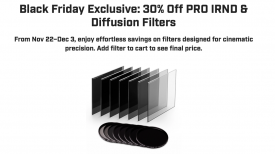
The Lindsey Optics Brilliant² Variable Neutral Density Filter is designed specifically for use in 4 x 5.65″ matte boxes. Not all variable ND filters are created equal. A lot of cheap variable ND filters will produce color casts. It really is important to know exactly what you are getting when you purchase any variable ND filter.
Why would you need a tray mounted Variable ND filter?
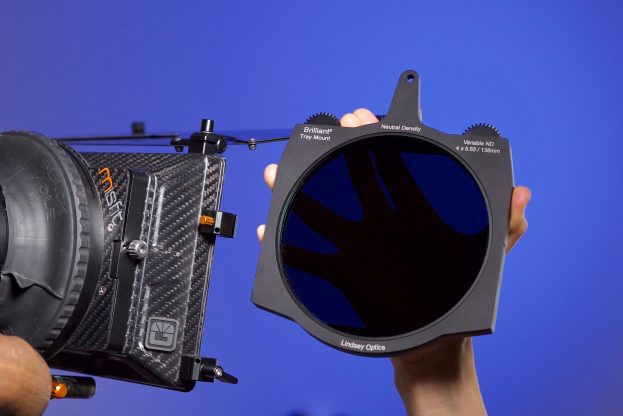
If you are using a digital cinema camera that doesn’t feature built-in ND filters, you could just use a regular screw on a variable ND filter, but what about if you are running larger cinema lenses? Here is where a rotatable 138mm variable ND filter in a 4 x5.65″ filter stage comes in handy. Having a rotatable variable ND filter in a 4 x5.65″ filter stage allows you to quickly dial in the exact amount of ND that you require.
Lindsey Optics Brilliant² Variable ND
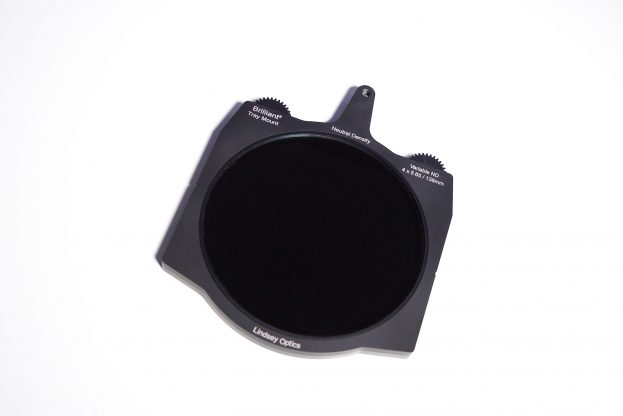
- Fast and Flexible Variable ND
- Change the ND value fast as the light changes or quickly find just the right ND value to get the desired lens aperture and depth of field
- Unlike other Variable NDs, it works when inserted in either orientation
- Optional motor mounting allows smooth and repeatable fade effects
- 2 to 8 stops of light control
- Cuts Both Visible and Near Infrared Light
- Broadband Multi-Layer Anti-Reflection water resistant and oil resistant coating
- The desired ND value is obtained by rotating either of the geared thumb wheels by hand or with a motor
2 – 8 Stops of Light Control – Including Near Infrared
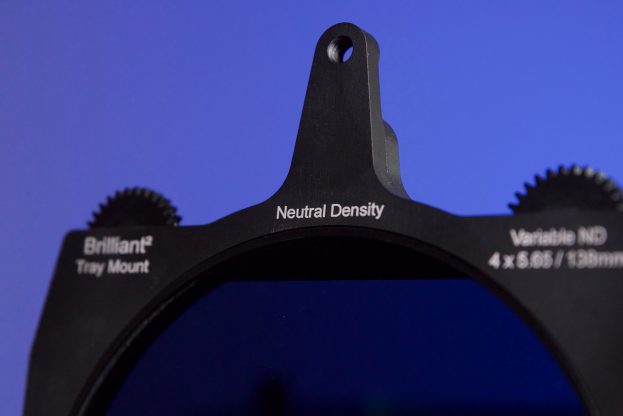
The filter provides between 2 – 8 stops of Variable Neutral Density light control, which equates to ND values between ND 0.6 (2 Stops) and ND 2.4 (8 Stops). Lindsey Optics claims that the Variable ND maintains neutral color no matter how much variable ND is being used.
One of the caveats of using a variable ND filter, especially with a wide-angle lens, is that if you try and use one that goes above ND 2.4 (8 Stops), an X mark cross pattern will appear on your image. That is why the Lindsey Optics Brilliant² Variable ND only goes to ND 2.4 (8 Stops). If you also attempt to go above ND 2.4 (8 Stops) there will be a blue color shift.
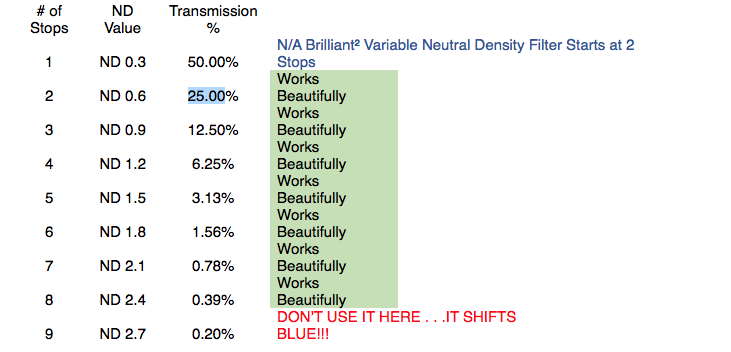
Even if your digital cinema camera has built-in ND filters there will often be times when that amount of ND is either too little or too much. Adding a regular ND filter in a matte box is one way of dealing with this problem, but this can be time-consuming and you still may not end up with just the right amount of ND.
In situations like this, I will often use a 138mm tray mounted variable ND so I can dial in just the right amount of ND I need.
Cuts Near Infrared Light
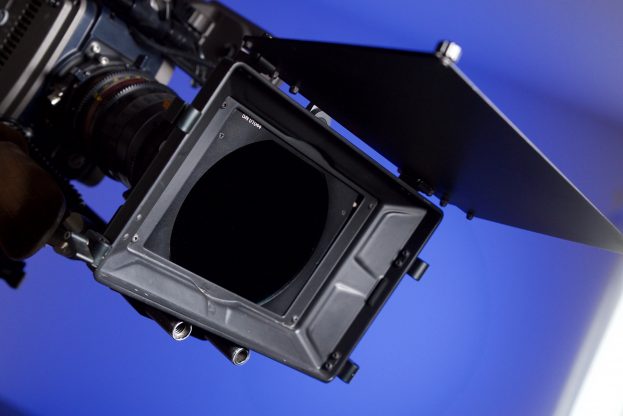
Lindsey Optics claims that the visible light is attenuated and near-infrared light from 700nm to 850nm is also reduced. This provides a good level of control over IR Pollution which some cameras sensors are sensitive to.
What is the filter made out of?
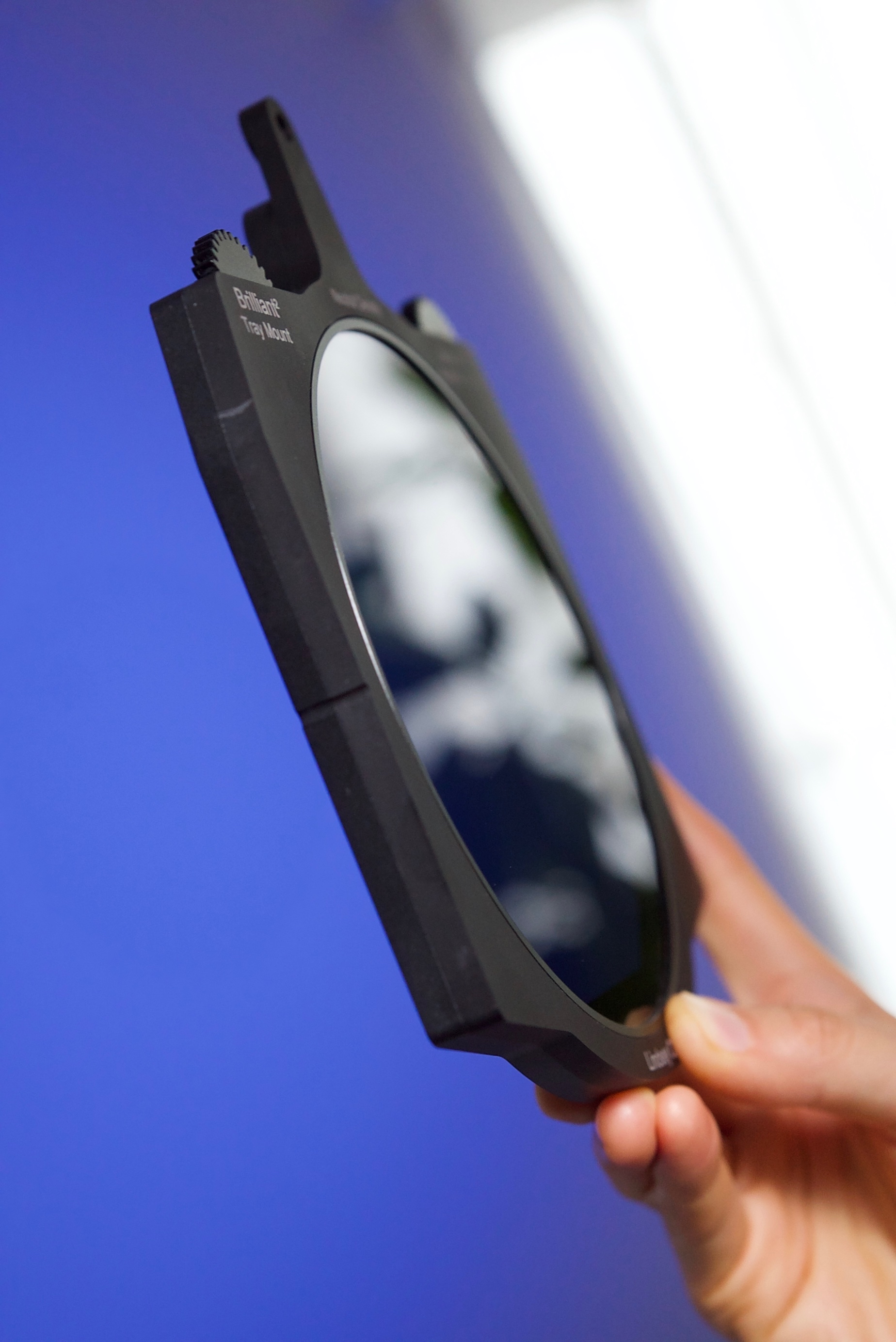
The Variable ND filter has a Broadband Multi-Layer Anti-Reflection coating that prevents internal filter-to-filter reflections, and this also has the added benefit of stopping reflections with any other filters that you have in the matte box. These coatings also help to maintain contrast so you won’t get any nasty ghosting of your image.
The circular polarizers used in the Brilliant² Variable ND are made with two components laminated between sheets of glass. There’s a linear polarization element that does the main work of polarization and a “quarter-wave plate” that spins the light to avoid unwanted artifacts. The Brilliant² Variable ND is assembled with the quarter-wave plate of each polarizer facing outward. The outward facing circular polarizer prevents any accidental polarization from occurring. The inward facing polarizer prevents any cross polarization.
The coating used for the filter is water and oil repellant which makes it a good solution for field use.
Build Quality
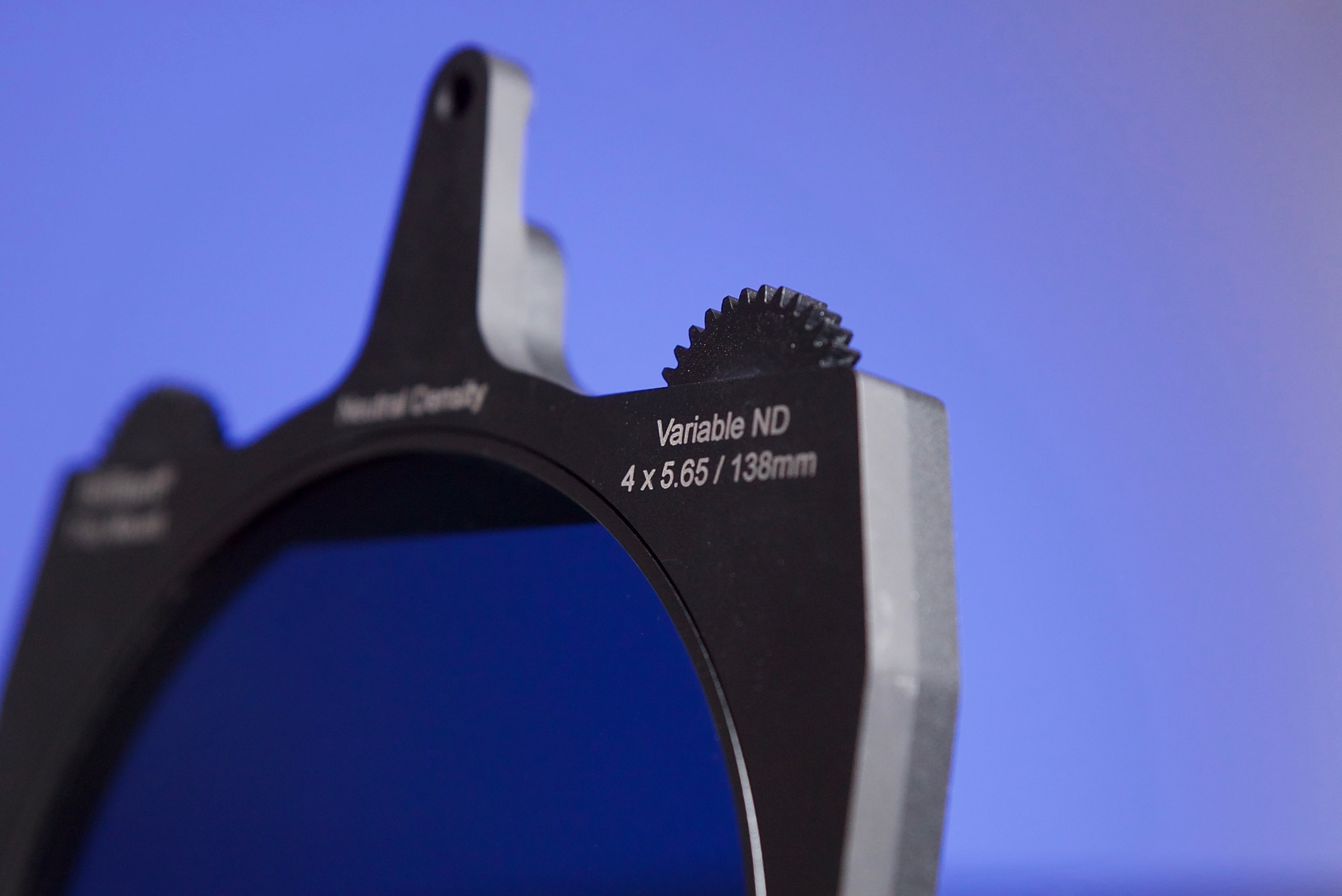
Lindsey Optics doesn’t seem to cut corners when it comes to build quality. The Brilliant² Variable Neutral Density Filter is beautifully made and it certainly has some weight to it. The filter is constructed using all aluminum body and gears. A Brilliant-Pol Circular Polarizer is mounted in the large main gear, and it uses Delrin rollers for smooth no-slip rotation. A second Brilliant-Pol Circular Polarizer is mounted in a fixed position. It’s important to note that the tray takes up two filter stages.
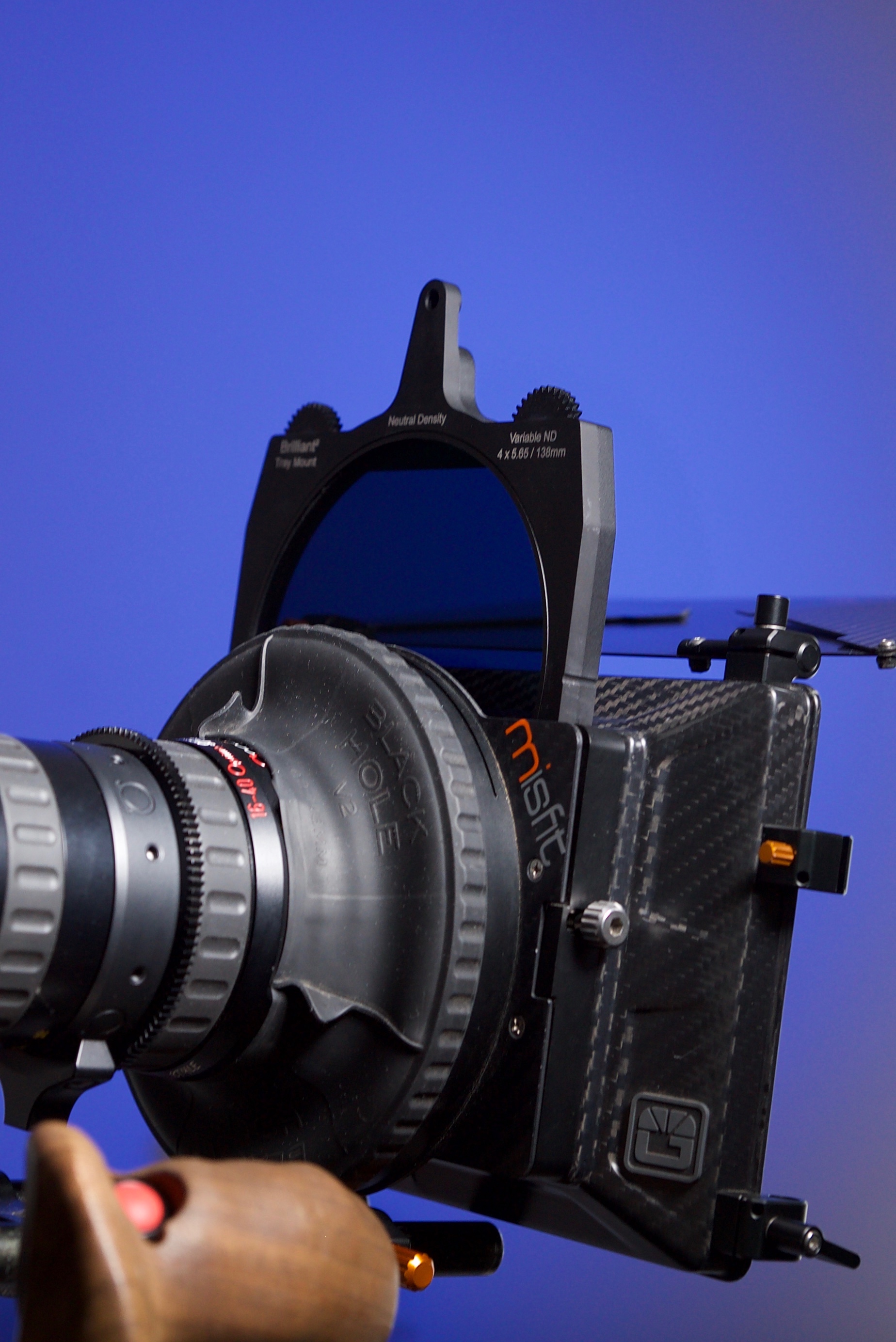
Both filters are in unique tray mount design that allows users to easily insert the filter into 4 x 5.65″ matte boxes. In a nice touch, because the filter is constructed with two circular polarizers, it still functions perfectly when inserted in either orientation.
Large 5.1 Inch Clear Aperture
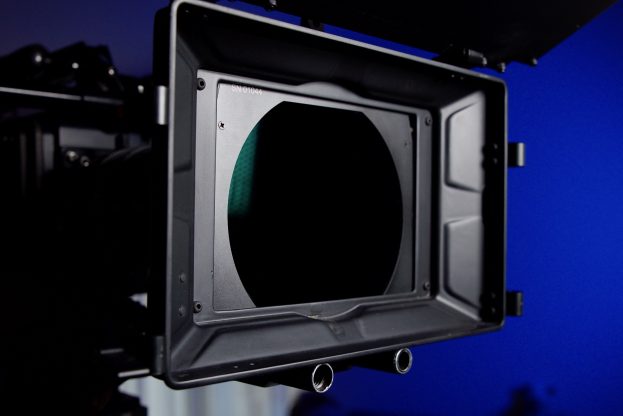
The two Brilliant Pol Circular Polarizers that make up the Variable ND have a large 5.1-inch clear aperture, which allows them to be used with wide-angle lenses and large diameter zoom lenses. The vertical dimension is masked at the top and bottom to prevent stray light from entering the matte box.
Optional Motorized Control
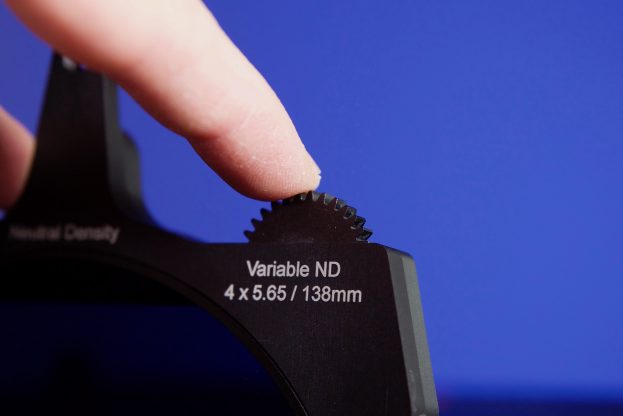
On the top handle of the filter tray, there is a standard 1/4″ thread that allows you to attach a motor for wireless remote control of the filter. This is handy if you are using a camera on a jib or a crane, or even a car mount. By synchronizing motorized variable ND with the lens aperture, variable depth of field effect can be achieved.
What matte boxes will it work in?
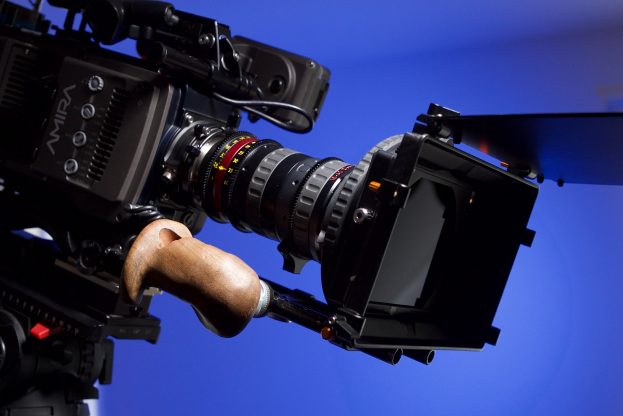
The Brilliant² Variable Neutral Density Filter works with Arri, Bright Tangerine, Chrosziel, Vocas, and other professional 4 x 5.65″ cine matte boxes that have at least two filter stages.
How does it perform?
I wanted to see just how well the Brilliant² Variable Neutral Density Filter worked and I wanted to find out if there was any color shift when using it. To do this I compared it directly against the in-built ND filters of the ARRI Amira. I set up a small test where I white balanced the camera and then shot a color checker chart so that I would have a base reference to compare the ND against. I then compared various strengths of ND, both the internal ND and the Lindsey Optics Variable ND to see if there were any color shifts.
To do this I white balanced the camera with no ND being used and then I used both the internal ND filters in the camera and the then the Brilliant² Variable Neutral Density Filter under the same conditions. This way the only variable would be the filters themselves.
It is often hard to see color shifts (especially if they are subtle) when shooting with a variable ND filter. The best way to test for a color shift is in a controlled environment with a color checker chart. This way you can clearly see any color shifts or loss of sharpness.
A Variable ND filter is always going to be at a disadvantage when compared to a straight ND filter. Despite this, I found that the Brilliant² Variable Neutral Density Filter still performed pretty well. When using an ND filter, variable or fixed, you really should do a white balance (unless you are shooting RAW) to maintain consistent results. For the most part, good ND filters will only have very mild color shifts that can easily be fixed in post.
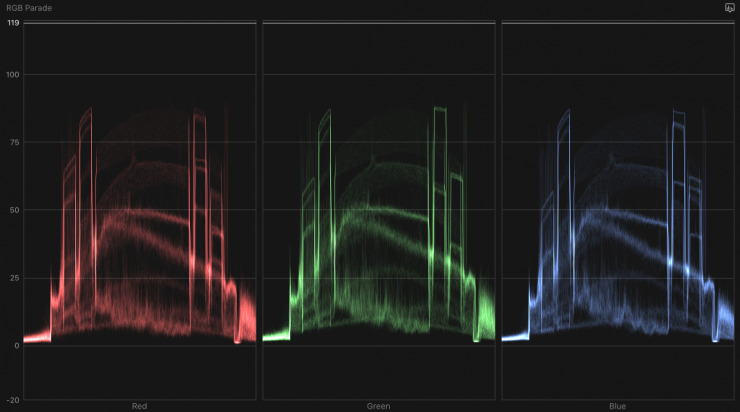
Above you can see the RGB parade for our reference image.
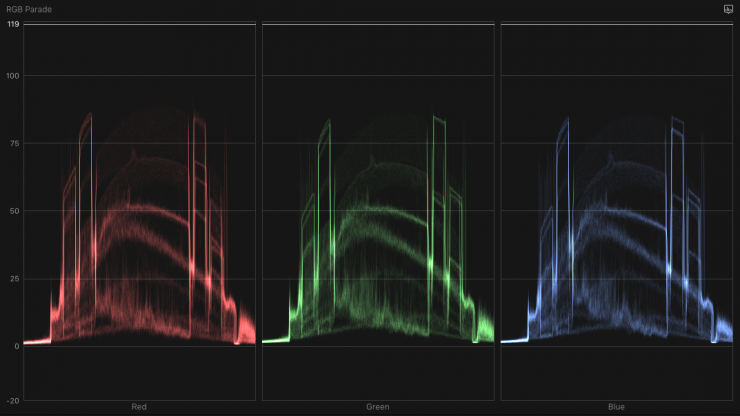
The internal ND filters in the AMIRA stayed very neutral until you got up to ND 2.1, and then there was a slight push towards magenta. You can see this from the RGB parade above.
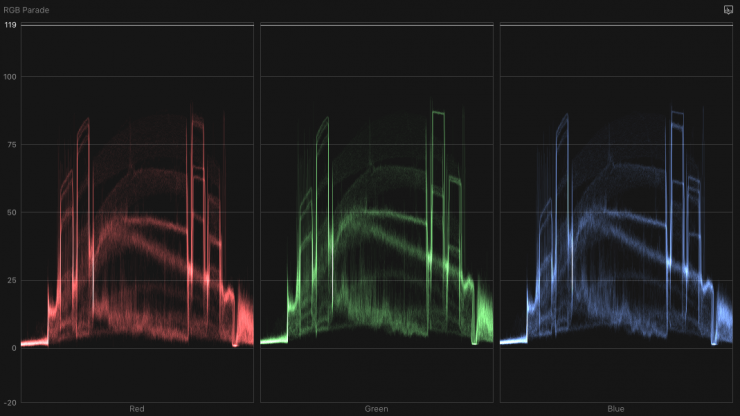
The Lindsey Optics Brilliant² Variable Neutral Density Filter certainly has a slight push towards blue. This is especially true when higher strengths of ND are introduced. Above you can see an RGB parade which clearly shows this. Despite this, it still manages to stay quite neutral.
Is 8 Stops Enough?
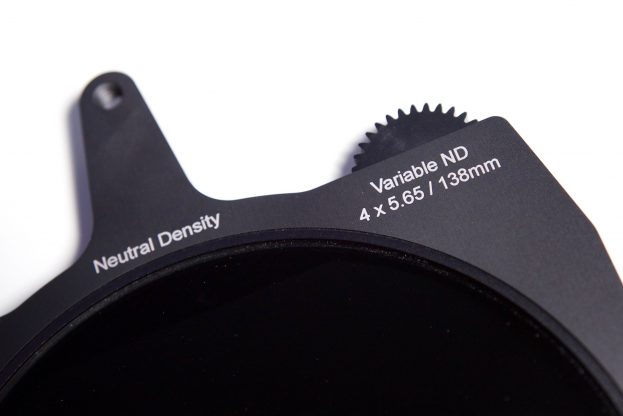
For most shooting scenarios eight stops of ND will be enough, but there will be situations where eight stops (ND 2.4) just isn’t enough to maintain correct exposure. If you are shooting sunrises or sunsets or trying to shoot wide open in bright conditions you may require more ND. If this is the case what you can do is to simply add a fixed value ND filter to your matte box.
There won’t be any large difference in putting a fixed ND filter in front or behind the Brilliant² Variable Neutral Density, except that if you put it behind the Variable ND, that 2nd filter is getting less light and if that filter is not AR coated, there’s less light to reflect off of it. If you have a high-quality ND filter with a good Broadband Anti-Reflection Coating, then putting it in front of the VND would mean less light bouncing around on the 4 surfaces in the Variable ND.
So, the simple rule to follow is:
If it’s uncoated: Put it behind the VND
If it’s AR Coated: Put it in front of the VND
Except for some very minor concern about ghost images, there won’t be any large penalty for placing a fixed ND filter, in front of the Variable ND or behind it.
Competition
Revar Cine Rota-Tray 4×5.65/138mm Variable ND Kit – a matte box based solution to neutral density
The Revar Cine Rota-Tray 4×5.65/138mm Variable ND Kit with Circular Polarizer and 4×5.65 Linear Pol MC ($799 USD) offers 1.6 to 8 stops of ND.
IBC 2015: Tiffen 138mm matte box mountable variable neutral density filter
Tiffen also has a couple of options. The first is the 138mm Matte Box Mountable VND ($856 USD) which includes a rubber donut & 114mm light prevention threaded rear ring. It offers 2-8 stops (ND.6 to ND2.4. The Tiffen 138mm VND fits directly into rail mounted matte boxes. This can also be purchased in a kit with a Bright Tangerine Misfit Mattebox for $2,358.25 USD.
Tiffen also has the 4 x 5.65 Mattebox Multi Rota Pola Tray – Variable Neutral Density ($1285 USD) which is a geared, rotating multi-filter system features a paired, ultra-thin 138mm Circular Polarizer and horizontal Variable ND in a 4 x 5.65 top-loading filter tray. The Tiffen MRT features three modes of operation in one filter tray: a rotating polarizer, variable ND (integrated with polarizer function, rotate gear to adjust ND value), and Warm/Cool FX filter effect.
The only trouble with this Tiffen option is that their polarizers are uncoated which means they reflect at least 4% per surface, which if you have a Rota-Pol and a Variable ND in the matte box you have 6 surfaces reflecting 4% per surface. 6 surfaces, 4% per surface, means 24% of the light entering the matte box is bouncing around creating ghost images, stray light, and flare.
Price
The Lindsey Optics Brilliant² Variable Neutral Density Filter retails for $899 USD. This makes it very competitively priced against its direct competition.
Conclusion
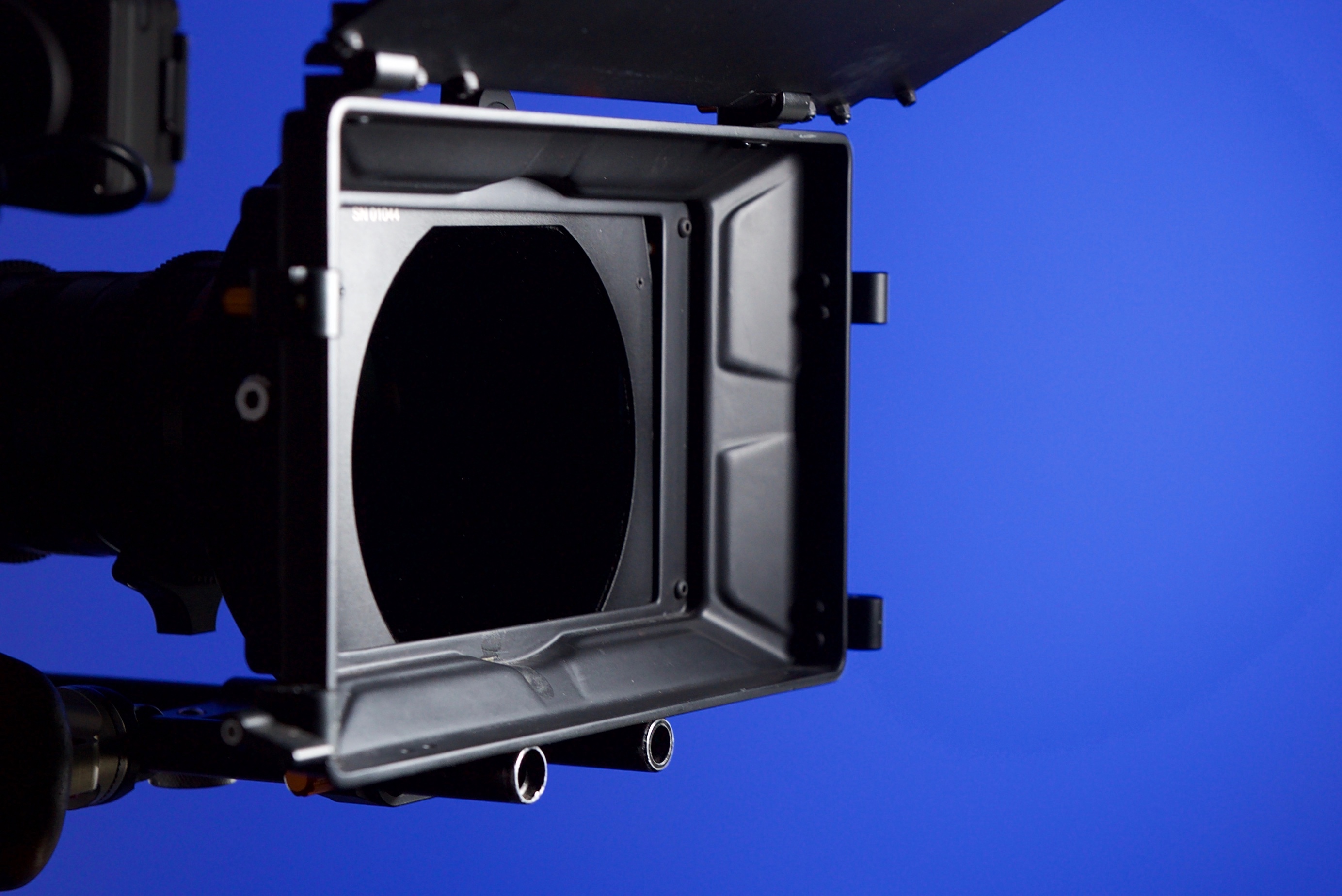
I was very impressed with the Lindsey Optics Brilliant² Variable Neutral Density Filter. It is beautifully made, easy to use, and most importantly it lets you dial in the exact amount of ND you need without compromising image quality. The variable ND is fairly color neutral and it maintains a consistent look no matter how much ND you dial in.





